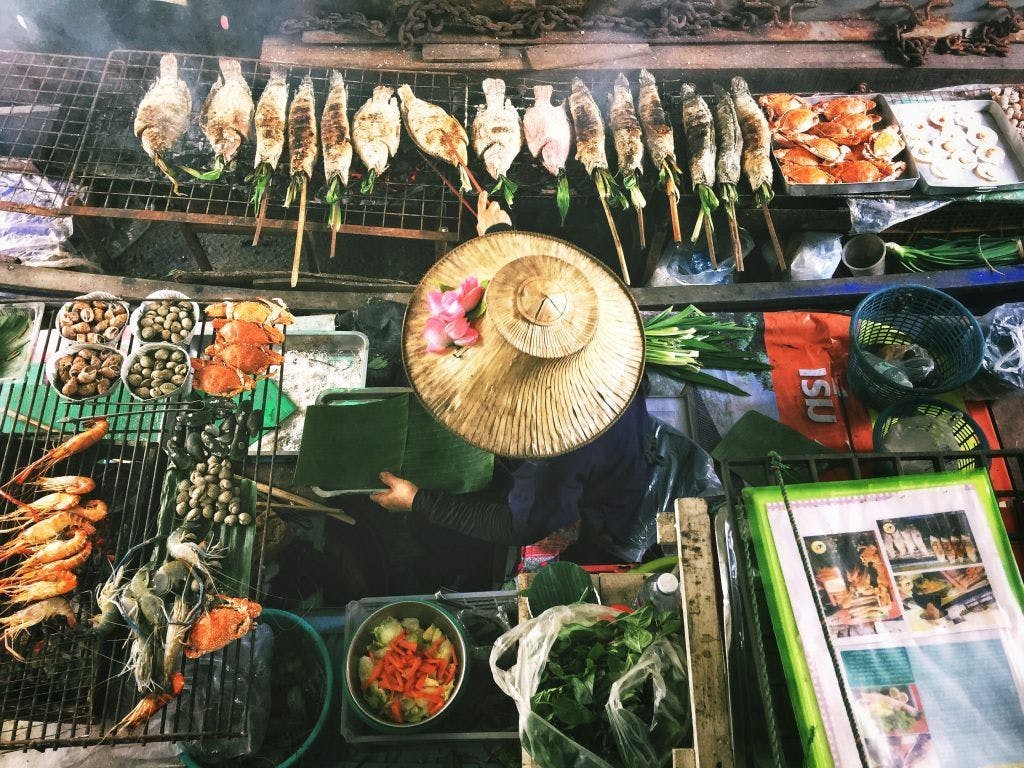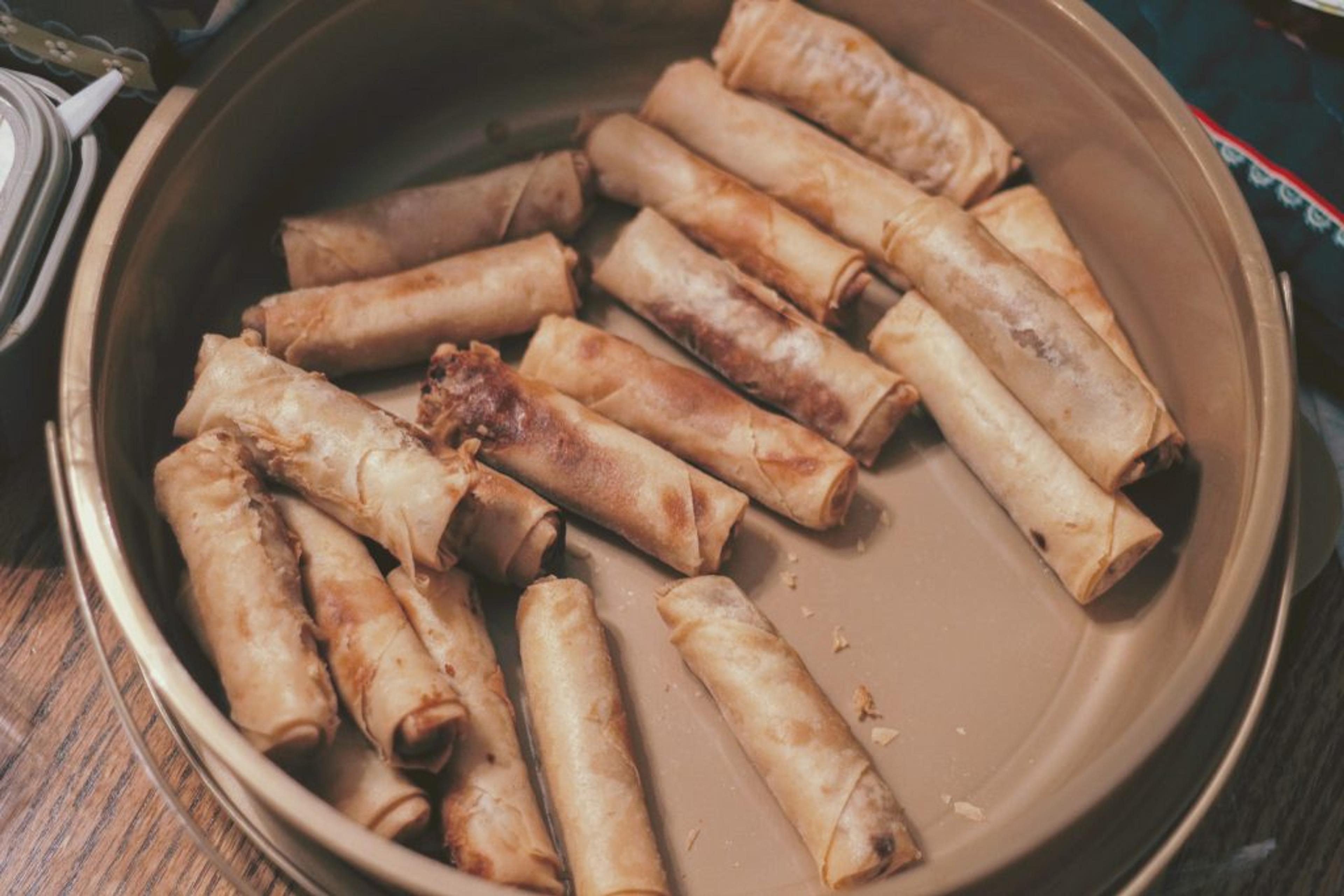South East Asia is a stimulation for the senses. From the manic sounds of tooting mopeds to the array of vibrant colours, there is something to see around every corner.
The glue which sticks every aspect of craziness together is the food, and not just the food but the fun that surrounds it. The hoards of people who take to plastic chairs at all hours of the day to tuck into delicacies which have been freshly prepared before their very eyes; the flavour combinations you’ll never have tried before. Food is quite literally spilling from the pavements.
That said, it can be a bit of a minefield: being thrown into the sprawling food markets with not a clue where to begin. So, to celebrate our Food Issue release month here at House of Coco, we’ve taken to the Asian streets to compile a guide to what you should be sampling and where. Thank us post Khao Soi.
Thailand
We start our journey in Thailand. Travelling North via night train from the capital of Bangkok to the country’s second biggest city Chiang Mai might not be the most pleasant of experiences, but the Northern Lanna cuisine which greets you on arrival will make the lack of sleep totally worth it.

The curries are hot and the mango rice is sweet, and you can revel in one of the best street food markets on the continent.
Every night, from about 6pm, a square which sits at the end of Wua Lai Road, on the Southern side of the city walls, comes alive. It offers a range of Thai, Chinese and Japanese food for ridiculously low prices, and everything is absolutely delicious.
One of Northern Thailand’s main specialities is Khao Soi: a red egg noodle curry, topped with crispy noodles, shallots and pickles, and this is the place to try it. It’s a great alternative to your usual red curry. You can also try Khanom Jeen, thin Thai noodles, green papaya salad and the cult favourite of Pad Thai. All of that washed down with a freshly blended fruit juice for the equivalent of 45p? We can’t think of anything better.
Once you’ve experienced the sights and tastes of Chiang Mai sufficiently, you’ll want to head North West out of the city to Pai. Dozens of mini-buses make the journey every day to the small and relaxed travellers haven which sits in the most Northern Thai mountains.
To get there you’ll have to endure a road with a staggering 762 bends (yes, really), but if you stock up on travel sickness tablets and try to fall asleep, it is just about bearable.
Every evening the main street which runs through the centre of Pai becomes a wonderful walking food market. Not only will you be treated to the most wonderful Thai food, there are options for Italian, Japanese and Indian cuisines.
From freshly prepared Bruschetta to Indian fusion flatbreads and trays of delicious sushi, there are so many choices… but for dessert? There’s only one option worth considering. Head to the stall labelled “Pai Crepes” and choose the chocolate, egg and raisin option. It may sound a little bizarre, but it is seriously worth the risk.
Laos
To the East of Northern Thailand sits Laos, a largely untouched South East Asian country with bags of natural beauty and endless delicious Asian-French fusion eats.
Your first stop is likely to be Luang Prabang, which is lucky since it is one of the greatest gems of the continent. The former capital of Laos is bursting with temples and culture, and the city’s longstanding French history gives the food that little bit of edge.

Pork and beef are specialities in Luang Prabang, and no meal had on the streets is complete without sampling the meats in the form of a traditional Luang Prabang sausage. Served warm and eaten alone or with sticky rice, peppers and ginger, these sausages have flavours of lime, garlic, ground pepper and lemongrass.
Ka nom Kok or coconut pancakes are another speciality in Luang Prabang. A batter is created from coconut milk, sugar and rice flower, then fried in two halves. Both are stuck together afterwards, to create a small, circular and totally delicious dessert.
In the days that follow, you can also try the array of grilled meats which are on offer (stalls will begin barbequing meats first thing and keep them going ’til the sun goes down), the famous smelly-sweet durian fruit, and fruit shakes made with mango, condensed milk and passionfruit.
Vietnam
The final country on our street food tour of Asia is Vietnam, a land of sprawling megacities, stunning landscapes and hillside tribes.
As with Thailand and Laos, the cheapest place to find the best cuisine in Vietnam is in a traditional open air market.

No round-up of Vietnamese street food would be complete without a mention of Pho: it is almost impossible to avoid and consists of a salty broth, rice noodles, herbs and either chicken, beef or vegetables. Cheap, tasty and available all around the clock.
Another speciality to note is Bun Cha, Hanoi’s very own dish. It is common particularly at lunchtime, and the staple ingredient is grilled pork. This is served in a broth with rice noodles and herbs, and often accompanied by crispy fried Vietnamese spring rolls. Oh, and if you don’t fancy eating it from a roadside plastic stool, the Old Quarter’s Bun Cha Ta restaurant is a sure fire hit. If it is good enough for Obama (he famously ate this dish there during his visit to the country), it is good enough for us.
If you’re a little more pressed for time, Banh Mi is a prime example of French-Asian fusion and takes our much loved Subway to a whole new level. A warm, crusty baguette is packed full of roast pork, pate, pickles and coriander, then dressed with a dash of soy sauce. Meanwhile, vegetarians can swap the pork for egg omelette. It is a total lunch hit.
Last but by certainly no means least is a snack which you can’t leave Vietnam without trying. Fresh Spring Rolls are Vietnamese simplicity at its finest and knock those created by the Thai and Lao out of the water. A soft rice paper is stuffed with slices of pork, prawn, noodles and lettuce and served with a warm peanut sauce. Many Vietnamese stuff a fried Spring roll inside this fresh casing – they’re all about balance and believe the fresh outer layer balances out it’s fried counterpart.
Looking for further inspriration for your trip around South East Asia? Check out our guide to the best five spots on the continent.


Comments are closed.